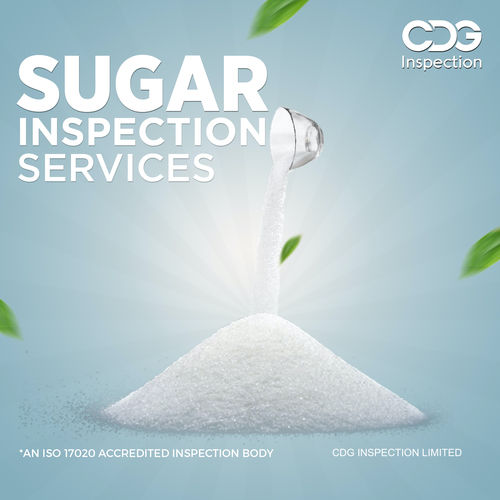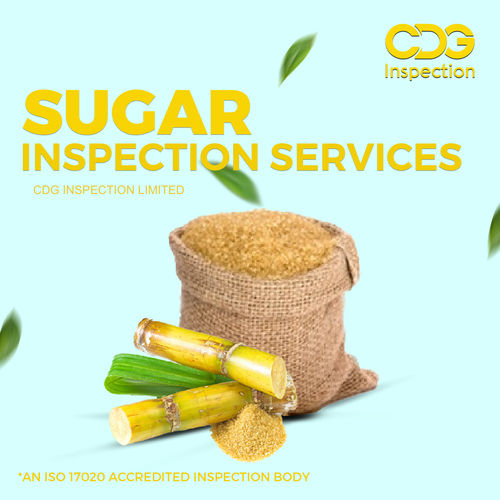Sugar Inspection Services in Roorkee
Sugar Inspection Services in Roorkee Trade Information
- Main Domestic Market
- All India
About Sugar Inspection Services in Roorkee
CIL provides accredited Raw & Refined Sugar Inspection services in Roorkee, Uttarakhand, India. Sugar is tested in many ways to validate its quality. These tests are according to a standard set of quality parameters that are important in demonstrating to potential buyers if the sugar meets the required standard. Sugar quality is important because it impacts the extractable sugar the amount of sugar that can be extracted from the milling or refining processes. Before we go through each category below, it is worth noting that every client will require a different quality of sugar, so it is always measured on a case by case basis. The following quality control measures consider the purity, colour and texture of the sugar. Sugar quality, polarisation, Polarisation (pol) measures the purity of the sugar, with the sucrose content of the sugar provided as a mass percentage. It is the main standard that is used to determine the quality of the sugar, and for sale to go ahead there is often a polarisation specification that must be met. A sugar crystal is very close to 100 percent pure sucrose, which is why pol is a useful measure. The higher the polarisation, the purer the sugar is, the lesser the polarisation, the more impurities are present in the sugar. The method is simple once it is boiled down (if you will pardon the pun.) Polarisation is measured by the optical rotation of polarised light, (presented in the degree of Z) passing through the sugar. In laymans terms, this means measuring the amount of light refracted through the final product. This makes sense when you think about the fact that molasses and other impurities make the sugar darker in colour, and therefore more difficult for light to pass through. Sugar quality ICUMSA colour measurement. Another way that sugar quality is measured is through colour. The term colour refers to a wide range of complex and molecular components that contribute to the overall appearance of sugar. Different colourants respond differently to the refining process, which is why colour is an important differentiating process when refineries are purchasing raw sugar that they want to turn into refined sugar. The processing of cane or beet can produce different scopes in terms of colour. In fact, this was seen as so important that in 1897, ICUMSA (IU) was officially formed, also known as The International Commission for Uniform Methods of Sugar Analysis. This International Standards body has provided a bench marking terms of measuring and defining the grade and quality of the sugar, based on the measurement of the yellowness of the sugar. The colour is dependant on the residual molasses that are not removed in the refining process. Sugar quality, ash, Ash refers to all the inorganic components that are naturally present in the cane or beet. It is present in cane juice, and is carried over in a smaller amount into raw sugar. Ash is made up of both soluble and insoluble compounds and can be determined by the conductivity of the solution. It is quite complex chemistry, but essentially a conductance meter is used to measure the soluble, inorganic compounds present in the sugar. If there is a high ash content in raw sugar, higher refining costs will be incurred as it will take longer to purify and there will be less yield.
Comprehensive Sugar Inspection Services in Roorkee
Benefit from our extensive sugar inspection solutions that comply with FSSAI, Agmark, and ISO 22000 standards. We cater to sugar mills, exporters, and importers, ensuring each batch is tested for purity and safety with advanced visual and analytical techniques. Our expert team delivers reliable, confidential, and evidence-backed reports in just 1-2 days. Choose single or contractual service modes based on your business needs.
Detailed Reporting and Swift Turnaround
Receive comprehensive lab analysis reports that include photographic evidence of inspection findings. We perform every test - from moisture content to adulteration - using random sampling, and deliver results within 24 hours of sampling. Our process ensures detailed and transparent reporting, giving clients full confidence in sugar quality and compliance.
FAQ's of Sugar Inspection Services in Roorkee:
Q: How are sugar samples collected and tested during the inspection service?
A: We use random sampling techniques to select representative sugar samples from batches. These samples undergo both visual inspection and laboratory analysis to assess moisture, purity, ICUMSA value, adulteration, and ash content, ensuring reliable and comprehensive results.Q: What compliance standards are followed in your sugar inspection process?
A: All inspections rigorously adhere to FSSAI, Agmark, and ISO 22000 standards, meeting both Indian and international quality requirements. This guarantees that your sugar meets regulatory benchmarks for safety and purity.Q: What information is included in the inspection report?
A: The report contains detailed laboratory analysis results for all tested parameters and includes photographic evidence to document the inspection process. Reports are delivered confidentially within 24 hours after sampling is completed.Q: When and how will I receive the inspection report?
A: Inspection reports are typically provided within 24 hours of sample collection. Reports are delivered securely and confidentially, ensuring that your business information is fully protected.Q: Who can benefit from these sugar inspection services in Roorkee?
A: Our services are suitable for sugar mills, exporters, and importers who require certified inspection and quality verification for their products. Both single inspection and long-term contractual arrangements are available.Q: What support is available if I have queries about the inspection or report?
A: We offer 24x7 customer support to address all your queries and assist you throughout the inspection process-from scheduling to understanding your final report.
Tell us about your requirement

Price:
Quantity
Select Unit
- 50
- 100
- 200
- 250
- 500
- 1000+
Additional detail
Mobile number
Email

 Send Inquiry
Send Inquiry






 Send Inquiry
Send Inquiry Send SMS
Send SMS